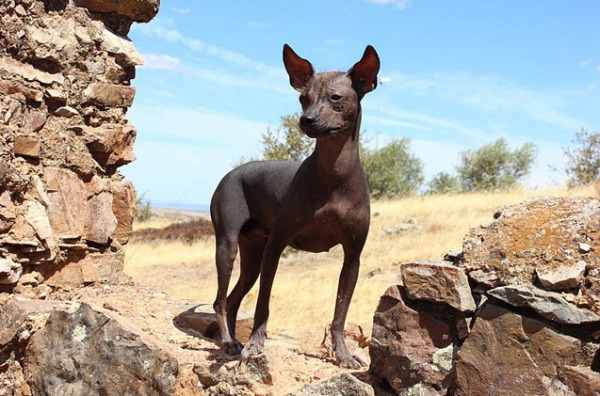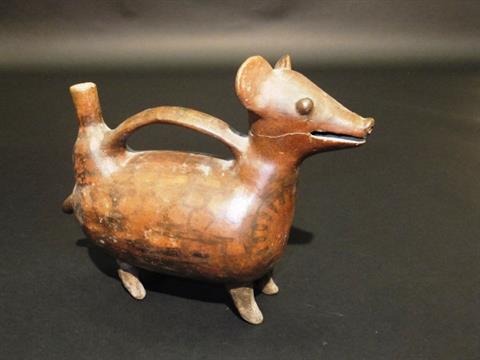Perros sin pelo, meaning dogs without hair, are common pets in Peru and something every traveler will encounter during a visit to this country.

The Peruvian hairless dog, also known as the perro sin pelo, Peruvian Inca Orchid or calato, meaning “naked,” is the national dog of Peru. While it can’t be objectively deemed cute or ugly, the Peruvian dog is known for being completely hairless except for, in some cases, small vestiges on the head, tail and feet. And yet, while the breed is known for its hairless nature, not all are hairless. In some litters there are both coated and hairless pups, though the hairless are the most famous.
In Peru, the Peruvian hairless dogs can be one of three sizes: small, medium and large. They can also vary in color from pink to black to brown to speckled. When first born, most Peruvian hairless dogs are a dark black or brown color. As they grow, they may develop a striking speckled pattern on their skin as what appear as pink freckles grow into large patches. As they get older, their ears also stand up straight.

Some people believe that dogs came to the Americas with Asian travelers over the Bering Strait. Others believe that dogs accompanied nomads who arrived to South America from Africa. And yet, despite the speculations as to the origins of the Peruvian dog, it is most likely that the perro sin pelo is a unique breed that actually originated in South America – specifically Peru. Pottery and other depictions from pre-Inca and Inca times show hairless dogs that greatly resemble the hairless Peruvian dogs of today.

During pre-Inca and Inca times, it is believed that the dogs were revered animals that were thought to have mystical qualities and were even dressed in ceremonial clothing on special occasions. The Incas kept them as companions and they were prized by Inca royalty as bed warmers. Be that as it may, when the Spanish arrived the dog was almost eradicated and some reports state that the Spaniards used the dogs as a food source. At any rate, the treasured breed managed to survive, especially in rural areas.
Today, the Peruvian hairless dog, officially named perro peruano sin pelo to reflect its origins, has received international acceptance as a distinct breed. However, its hairless nature and limited genetic diversity have contributed to a number of health concerns. While the breed is generally considered healthy and the dogs will typically live between 11 and 13 years, many suffer from dental problems. It is thought that the genes that are responsible for hairlessness also affect dentition. For that reason, many of the dogs are born without premolars and are unable to chew hard food. The coated variety has full dentition.
In addition, the hairless variety is very sensitive to cold and sunlight, making them badly suited for extreme climates. Their skin is very susceptible to sunburn, so most owners need to apply lots of sunscreen before taking their dogs outside and dress them in coats or sweaters when the weather is cold or damp.
Overall, the Peruvian hairless dog is a smart, alert, active animal that is fairly easy to train. They can be extremely loyal and affectionate, as well as instinctively protective and defensive. Despite their odd and striking appearance, they make excellent companions and it is no mystery why these dogs are still treasured animals in Peru.

